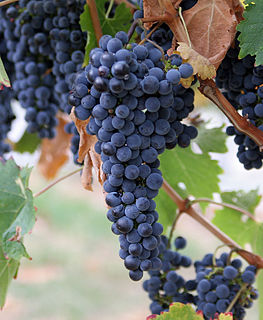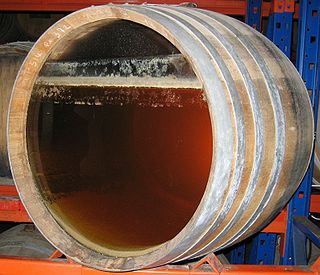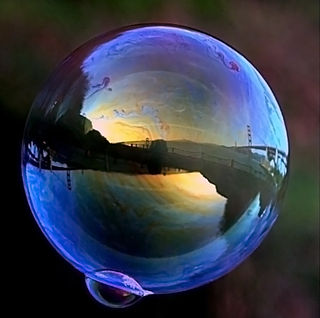Related Research Articles
Recreational mathematics is mathematics carried out for recreation (entertainment) rather than as a strictly research and application-based professional activity or as a part of a student's formal education. Although it is not necessarily limited to being an endeavor for amateurs, many topics in this field require no knowledge of advanced mathematics. Recreational mathematics involves mathematical puzzles and games, often appealing to children and untrained adults, inspiring their further study of the subject.

Packing problems are a class of optimization problems in mathematics that involve attempting to pack objects together into containers. The goal is to either pack a single container as densely as possible or pack all objects using as few containers as possible. Many of these problems can be related to real life packaging, storage and transportation issues. Each packing problem has a dual covering problem, which asks how many of the same objects are required to completely cover every region of the container, where objects are allowed to overlap.

Solera is a process for aging liquids such as wine, beer, vinegar, and brandy, by fractional blending in such a way that the finished product is a mixture of ages, with the average age gradually increasing as the process continues over many years. The purpose of this labor-intensive process is the maintenance of a reliable style and quality of the beverage over time. Solera means "on the ground" in Spanish, and it refers to the lower level of the set of barrels or other containers used in the process; the liquid is traditionally transferred from barrel to barrel, top to bottom, the oldest mixtures being in the barrel right "on the ground", although the containers in today's process are not necessarily stacked physically in the way that this implies but merely carefully labeled. Products which are often solera aged include Sherry, Madeira, Lillet, Port wine, Marsala, Mavrodafni, Muscat, and Muscadelle wines; Balsamic, Commandaria, some Vins doux naturels, and Sherry vinegars; Brandy de Jerez; beer; rums; and whiskies. Since the origin of this process is out of the Iberian peninsula, most of the traditional terminology is in Spanish and Portuguese.

Walter William Rouse Ball, known as W. W. Rouse Ball, was a British mathematician, lawyer, and fellow at Trinity College, Cambridge, from 1878 to 1905. He was also a keen amateur magician, and the founding president of the Cambridge Pentacle Club in 1919, one of the world's oldest magic societies.

Half and half is the name of various beverages and foods made of an equal-parts mixture of two substances, including dairy products, alcoholic beverages, and soft drinks.

Winemaking or vinification is the production of wine, starting with the selection of the fruit, its fermentation into alcohol, and the bottling of the finished liquid. The history of wine-making stretches over millennia. The science of wine and winemaking is known as oenology. A winemaker may also be called a vintner. The growing of grapes is viticulture and there are many varieties of grapes.

A barrel is one of several units of volume applied in various contexts; there are dry barrels, fluid barrels, oil barrels, and so forth. For historical reasons the volumes of some barrel units are roughly double the volumes of others; volumes in common use range approximately from 100 to 200 litres. In many connections the term drum is used almost interchangeably with barrel.

A barrel or cask is a hollow cylindrical container with a bulging center, longer than it is wide. They are traditionally made of wooden staves and bound by wood or metal hoops. The word vat is often used for large containers for liquids, usually alcoholic beverages; a small barrel or cask, typically with capacity of not more than ten gallons, is known as a keg.

A drum is a cylindrical container used for shipping bulk cargo. Drums can be made of steel, dense paperboard, or plastics, and are generally used for the transportation and storage of liquids and powders. Drums are often certified for shipment of dangerous goods. Shipped goods must be matched with the make of drum necessary to comply with applicable regulations. Drums are also called barrels in common usage.

A keg is a small barrel.
Degassing, also known as degasification, is the removal of dissolved gases from liquids, especially water or aqueous solutions. There are numerous methods for removing gases from liquids.

Zivania or zivana is a Cypriot pomace brandy produced from the distillation of a mixture of grape pomace and local dry wines made from Xynisteri and Mavro grapes. The name of zivania is derived from zivana which means pomace in the Greek dialect of Cyprus. Zivania is colourless and alcoholic with a light aroma of raisins. Its alcohol content varies, with 45% by volume being the typical value. As defined by law, zivania shall not have more than 60% alcohol content. Zivania contains no sugars and has no acidity.

Kirkman's schoolgirl problem is a problem in combinatorics proposed by Rev. Thomas Penyngton Kirkman in 1850 as Query VI in The Lady's and Gentleman's Diary (pg.48). The problem states:
Fifteen young ladies in a school walk out three abreast for seven days in succession: it is required to arrange them daily so that no two shall walk twice abreast.

The three cups problem, also known as the three cup challenge and other variants, is a mathematical puzzle that, in its most common form, cannot be solved.

Vino cotto, is a type of wine from the Marche and Abruzzo in Central Italy, made primarily in the hills of the Province of Ascoli Piceno and the Province of Macerata. It is a strong ruby-colored wine, usually semi-sweet, and traditionally drunk in small glasses with puddings and cheese.
This glossary of winemaking terms lists some of terms and definitions involved in making wine, fruit wine, and mead.

Ullage is a winemaking term that has several meanings but most commonly refers to the headspace of air between wine and the top of the container holding the wine. It can also refer to the process of evaporation that creates the headspace itself or it can be used as a past tense verb to describe a wine barrel or bottle that has gone through the evaporation process. The headspace of air is a mixture mostly of alcohol and water vapors with carbon dioxide that is a by-product of the fermentation process. In containers that are not completely air-tight, oxygen can also seep into this space. While some oxygen is beneficial to the aging process of wine, excessive amounts can lead to oxidation and other various wine faults. This is why wine in the barrels is regularly "topped up" and refilled to the top with wine in order to minimize the head space. In the bottle, the ullage or "fill level" of the wine can be an important indicator of the kind of care and storage conditions that the wine was kept in. After-market resellers and wine auction houses will often inspect the ullage levels of older vintages to determine the potential quality and value of wine.

In the mathematical theory of minimal surfaces, the double bubble conjecture states that the shape that encloses and separates two given volumes and has the minimum possible surface area is a standard double bubble — three spherical surfaces meeting at angles of 2π/3 on a common circle. It is now a theorem, as a proof of it was published in 2002.

Water pouring puzzles are a class of puzzle involving a finite collection of water jugs of known integer capacities . Initially each jug contains a known integer volume of liquid, not necessarily equal to its capacity. Puzzles of this type ask how many steps of pouring water from one jug to another are needed to reach a goal state, specified in terms of the volume of liquid that must be present in some jug or jugs.
In number theory, reversing the digits of a number n sometimes produces another number m that is divisible by n. This happens trivially when n is a palindromic number; the nontrivial reverse divisors are
References
- ↑ Gamow, George; Stern, Marvin (1958), Puzzle math, New York: Viking Press, pp. 103–104
- 1 2 Gardner, Martin (1988). "Chapter 10". Hexaflexagons And Other Mathematical Diversions: the first Scientific American book of puzzles & games. Chicago and London: The University of Chicago Press. ISBN 978-0-226-28254-1.
- ↑ David Singmaster (2005). "Mathematical Recreations And Problems Of Past And Present Times". In Ivor Grattan-Guinness; Roger Cooke; et al. (eds.). Landmark Writings in Western Mathematics 1640–1940. Elsevier. p. 662. ISBN 978-0-444-50871-3.
- ↑ W. W. Rouse Ball (1896). Mathematical recreations and problems of past and present times (3rd ed.). London and New York: Macmillan. ASIN B0006AHNJU. OCLC 2948122.